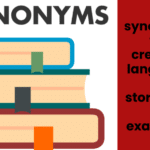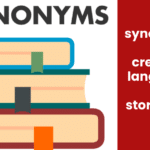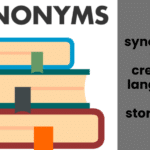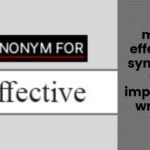When it comes to professional communications, expressing enthusiasm while maintaining a respectful and polished tone is essential. You might often find yourself wanting to say “I would love to,” but in professional settings, finding the right phrasing can help convey your eagerness without seeming too casual. Using more polished phrases lets you craft polite, effective, and professional communications that leave a positive impression.
In this article, we’re exploring ten professional alternatives to “I would love to” that convey your enthusiasm in a polished and genuine way. Each phrase comes with a practical example, such as an email or message, to help you understand how to use it in real scenarios.
Even you’re responding to an invitation, expressing interest in a project, or confirming your availability, these phrases will help you strike the right tone and connect more meaningfully with colleagues and clients.
Is It Professional to Say “I Would Love To”
Using “I would love to” can be professional, but it depends on the context and audience. In formal settings, it may come across as too casual or overly enthusiastic. Instead, alternatives like “I am eager to” or “I’d be pleased to” convey enthusiasm in a polished tone, which makes them ideal for maintaining professionalism and expressing interest or willingness to engage.
What to Say Instead of “I Would Love To”
- I am keen to
- I am eager to
- I would be delighted to
- I am interested in
- It would be my pleasure to
- I am excited to
- I look forward to
- I am enthusiastic about
- Count me in for
- I’d be happy to
- I am committed to
- I am open to
- I am prepared to
- I’d be grateful for the opportunity to
- I’m on board with
- I’m ready to
- I am willing to
- I am happy to assist with
- I am honored to
- I’d be pleased to
20 Other Ways to Say “I Would Love To”
Here are 20 Other Ways to Say “I Would Love To” (With Example):
1. I Am Keen To

Expressing that you’re “keen” conveys eagerness in a professional tone. It’s friendly yet formal, making it ideal for emails or written communications where you want to show excitement about a proposal, meeting, or collaboration.
Example:
Email to a colleague:
“Hi Sarah, I am keen to explore the new project proposal with you. Let’s connect this week to discuss it further.”
2. I Am Eager To
“I am eager to” communicates enthusiasm and anticipation, often suitable for situations where you’re expressing interest in future opportunities. This alternative feels natural and professional, giving the recipient confidence in your commitment.
Example:
Follow-up message after an interview:
“Dear Mr. Roberts, I am eager to contribute my skills to your team and support your goals. Please let me know if there’s anything further you’d like to discuss.”
3. I Would Be Delighted To
When you want to sound both warm and professional, choose “I would be delighted to.”
Example:
Reply to an invitation:
“Dear Emily, I would be delighted to attend the quarterly meeting next week. Please let me know if I can prepare anything in advance.”
4. I Am Interested In
For more formal situations, “I am interested in” communicates your genuine interest without sounding too emotional. It’s a versatile phrase that fits almost any context.
Example:
Response to a project opportunity:
“Hello James, I am interested in learning more about the upcoming marketing initiative. Let’s set up a time to discuss how I can contribute.”
5. It Would Be My Pleasure To
“It would be my pleasure to” is a polite and respectful way to show enthusiasm. This phrase is well-suited for polite communication examples, especially in responses where courtesy is paramount.
Example:
Email to a new client:
“Dear Ms. Martinez, it would be my pleasure to assist you with the project. I am looking forward to ensuring your goals are met.”
6. I Am Excited To

Using “I am excited to” works well when you want to show genuine enthusiasm in a professional environment. This phrase brings energy without sacrificing formality.
Example:
Message to a team about a new project:
“Hi Team, I am excited to start working on the product launch with all of you. Let’s bring our ideas together for a successful outcome!”
7. I Look Forward To
“I look forward to” is one of the most widely used phrases for professional communications. It’s polite, sincere, and indicates that you’re anticipating something positively.
Example:
Follow-up email after a meeting:
“Hi Mark, I look forward to implementing the strategies we discussed. I’ll prepare an outline to kick things off.”
8. I Am Enthusiastic About
Showing enthusiasm in the workplace can be powerful, especially if done professionally. “I am enthusiastic about” conveys positive energy and keeps your tone respectful.
Example:
Email to a supervisor:
“Hello Dr. Nguyen, I am enthusiastic about the chance to lead the upcoming project. Let’s discuss the initial steps soon.”
9. Count Me In For
This phrase is casual but appropriate in many professional settings, especially when you’re responding to group activities or informal project teams.
Example:
Reply in a team chat:
“Sounds like a great idea, Alex! You can count me in for the brainstorming session on Friday.”
10. I’d Be Happy To

“I’d be happy to” is a polite and positive response that’s especially effective in customer service or client-facing roles. It demonstrates a willingness to help.
Example:
Email response to a customer request:
“Dear Mr. Lee, I’d be happy to assist with your inquiry. Please let me know if there’s anything specific you need.”
11. I Am Committed To
Using “I am committed to” conveys a strong sense of dedication and seriousness. This phrase is ideal for demonstrating a solid commitment to a task or project.
Example:
Email to a project manager:
“Dear Patricia, I am committed to ensuring the project meets its goals. Let me know if there are specific areas you’d like me to focus on.”
12. I Am Open To
When expressing flexibility or openness, “I am open to” is a polite way to show your willingness to participate or consider ideas.
Example:
Reply in a brainstorming email chain:
“Hi Team, I am open to exploring all suggestions for our marketing approach. Looking forward to a productive discussion.”
13. I Am Prepared To
This phrase is helpful when you want to highlight your readiness to take on a responsibility or new role, showing confidence in your capabilities.
Example:
Email to a supervisor:
“Hello Mr. Clark, I am prepared to step in as the project lead if needed. Please let me know how I can best support the team.”
14. I’d Be Grateful For the Opportunity To
Using this phrase adds a touch of gratitude and respect, making it particularly effective for formal requests or applications.
Example:
Application email for a professional development program:
“Dear Selection Committee, I’d be grateful for the opportunity to join this program and develop my skills further.”
15. I’m On Board With

If you’re responding to an idea or plan, “I’m on board with” signals enthusiastic agreement and support. It’s ideal for team settings and collaborative projects.
Example:
Message in a team chat:
“Hi everyone, I’m on board with the new project timeline. Let’s aim to keep our momentum strong!”
16. I’m Ready To
“I’m ready to” expresses enthusiasm combined with a sense of preparedness. It’s a straightforward, friendly way to show you’re available and willing to begin a task, serving as a professional alternative to “I would love to.”
Example:
Reply to a project kickoff email:
“Hi Lisa, I’m ready to dive into the new project. Please share any initial details when available.”
17. I Am Willing To
This phrase shows willingness without sounding overly eager. It’s a reliable choice when you want to politely accept a task or opportunity.
Example:
Response to a task request:
“Dear Sam, I am willing to take on this responsibility. Let me know if there’s anything I should prepare in advance.”
18. I Am Happy to Assist With
When offering help, “I am happy to assist with” conveys a polite readiness to support, making it a good choice for customer service or team-oriented roles.
Example:
Reply to a colleague’s request:
“Hi Carla, I am happy to assist with the event planning. Just let me know where I can start!”
19. I Am Honored To
Using “I am honored to” is suitable when accepting a role or responsibility that carries significance. This phrase conveys respect and appreciation.
Example:
Reply to an invitation to lead a project:
“Dear Dr. Gomez, I am honored to take on this leadership role. I look forward to collaborating with the team.”
20. I’d Be Pleased To

“I’d be pleased to” serves as a warm, professional alternative that politely expresses willingness. This phrase works well in formal settings when you respond to invitations or requests.
Example:
Response to a meeting request:
“Dear Ms. Lee, I’d be pleased to attend the upcoming meeting. Please let me know if I need to prepare anything.”
Pro Tips for Using Professional Synonyms for “I Would Love To”
- Know Your Audience: Some alternatives may work better in specific settings. For instance, “I’m on board with” fits a casual team setting, while “I’d be honored to” is better suited for formal interactions.
- Balance Enthusiasm with Professionalism: If the situation calls for enthusiasm, don’t be afraid to use words like “excited” or “keen.” For formal communications, consider phrases like “I am pleased to” or “I am prepared to.”
- Stay Sincere: Your choice of words should sound genuine. Avoid overly formal or overly casual phrases if they don’t match your usual tone or the tone of your organization.
Final Thoughts
Finding professional alternatives to “I would love to” allows you to convey enthusiasm in a respectful way. Each phrase we explored has its unique strengths, from the warmth of “I’d be happy to” to the energy of “I am keen to.”
Using these options not only enhances your communication but also helps you connect more meaningfully with colleagues, clients, and collaborators. Remember, effective communication is about balance showing enthusiasm without compromising professionalism.

Emily Olivia is an experienced writer specializing in grammar and English language topics. With a passion for clarity and precision, she shares valuable insights on synonyms, grammar rules, and writing tips to help readers enhance their language skills on Grammar Path.







